How Richard Proenneke Lived Alone in the Wilderness for 30 Years
Table Of Contents
- How Richard Proenneke Lived Alone in the Wilderness for 30 Years
- Introduction
- Who Was Richard Proenneke?
- How Did He Build His Cabin?
- Alone In The Wilderness YouTube Documentary: Part I
- Alone In the Wilderness YouTube Documentary: Part II
- What Did He Do in the Wilderness?
- What Can We Learn from His Experience?
- FAQs
- How did Richard survive in the harsh Alaskan winters?
- What impact did his lifestyle have on the local wildlife?
- Did he face any health challenges during his time in the wilderness?
- How can one incorporate elements of Proenneke’s off-grid living into a modern lifestyle?
- What is the significance of Richard’s story in today’s fast-paced world?
- Conclusion
Embarking on a journey into the heart of the Alaskan wilderness, Richard Proenneke’s off-grid cabin saga stands as a testament to human resilience and connection with nature.
In this article, we delve into the captivating story of Proenneke’s solitary existence in the wild, exploring the nuances of his off-grid living.
Introduction
In a world bustling with constant connectivity, the allure of solitude often beckons. Richard Proenneke, a name synonymous with wilderness living, embarked on an extraordinary journey of self-reliance and communion with nature in the heart of the Alaskan wilderness. This article delves into the captivating story of Richard Proenneke, exploring his off-grid life, the art of survival, and the timeless lessons we can glean from his unparalleled experience.
Richard filmed his adventures so he could show his relatives in the lower 48 states what life was like in Alaska, building his cabin, hunting for food and exploring the area.
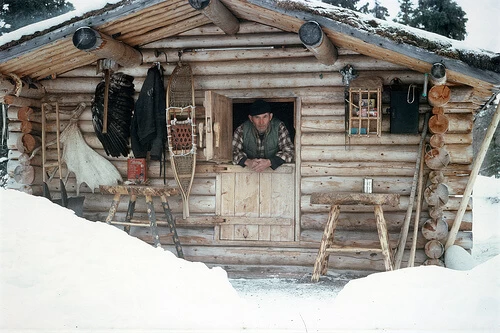
Richard Proenneke’s off-grid haven was no ordinary dwelling; it was a testament to human resilience and craftsmanship. With meticulous precision and determination, he crafted a log cabin using materials sourced from the surrounding wilderness. The cabin, nestled against the picturesque Twin Lakes, became the canvas for Proenneke’s solitary masterpiece.
The Wilderness Chronicles
Bob Swerer has taken the best footage from Dick’s films and he has created several videos about Dick, “Alone in the Wilderness“, “Alaska, Silence and Solitude” and “The Frozen North“.
Who Was Richard Proenneke?
Richard Proenneke was born in 1916 in Iowa, USA. He grew up on a farm and learned various skills such as carpentry, mechanics, and hunting.
Richard’s father, William Christian Proenneke, served in WWI and afterwards became a well driller. His mother, Laura (nee Bonn) was a homemaker. They were married in late 1909, or early 1910. Richard was the third child of six children. Robert, Helen, Lorene, Richard (Dick), Florence, and Raymond (Jake).
Following the attack on Pearl Harbor, Richard joined the US navy enlisting as a carpenter. After a two year posting at Pearl Harbor, he was transferred to San Francisco where he awaited a second posting onboard a new ship. Dick contracted rheumatic fever and spent six months recovering at the Norco Naval Hospital. He fell sick after hiking a mountain near San Francisco. As a result, he was medically discharged from the military in 1945. This was the beginning of Richard’s journey to a life of healing and strengthening his body. He was always fascinated by the wilderness and loved to explore new places.
Soon after leaving the military Proenneke attended a diesel mechanic school. He easily adapted to his new trade and excelled. Richard became and skilled mechanic but longed for something else. He moved closer to his passion when he next moved to Oregon and began work on a sheep ranch. In 1950 he moved to Shuyak Island, Alaska.
There he worked as a heavy equipment operator and repairman for the Naval Air Station at Kodiak. While in Alaska, Richard also worked for the Fish and Wildlife Service at King Salmon on the Alaska Peninsula as a salmon fisherman/diesel mechanic. During this time he squirrelled his earnings and saved for his retirement.
In 1967, at the age of 51, he decided to fulfill his dream of living alone in the wilderness. He chose a remote site on the shore of Twin Lakes in the Lake Clark National Park, Alaska. He flew there with a small plane, carrying only some tools and supplies. He planned to stay there for one year, but he ended up staying for 30 years, until he retired in 1999.
He found a place, built a cabin, and stayed to become part of the country.
“To live in a pristine land unchanged by man… to roam a wilderness through which few other humans have passed… to choose an idyllic site, cut trees and build a log cabin… to be a self-sufficient craftsman, making what is needed from materials available… to be not at odds with the world, but content with one’s own thoughts and company… Thousands have had such dreams, but Dick Proenneke lived them.” – Sam Keith

The documentary Alone in the Wilderness was the first filmed account of the day-to-day explorations and activities he carried out alone.
How Did He Build His Cabin?
Proenneke’s meticulous integration into the Alaskan environment highlights the importance of what is to become a motto for him… “environmental stewardship”. His commitment to leaving minimal impact serves as a poignant reminder of our responsibility to cherish and preserve the natural world.
On May 21, 1968, Richard Proenneke reached his new place of retirement at Twin Lakes. Prior to his arrival, he arranged to use an existing cabin on the upper lake. Spike Carrithers, a retired Navy captain, owned the cabin. The cabin was close to the site where Dick would soon build his own cabin.
His log cabin is easily the most impressive achievement. Built by hand and using only the materials and tools he brought or found in the wilderness. Even his tools were mostly handmade. He cut down spruce trees, peeled off the bark, and shaped them into logs. They were fitted together using notches and nails. Everything was crafted from the surrounding forest including the roof, the floor, the walls, and the door. He also built a fireplace, a stove, a table, a bed, a bench, and shelves. Richard decorated his cabin with carvings, paintings, and antlers.
He documented his cabin-building process using a 16mm camera, which he also used to film the wildlife and scenery around him. In addition, he kept a detailed diary, where he recorded his daily activities, observations, and thoughts. He wrote about the weather, the seasons, the plants, the animals, and his challenges and joys of living alone in the wilderness.
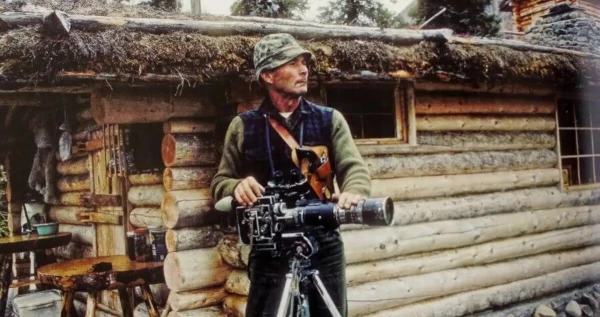
His ingenuity knew no bounds when he crafted his log cabin. Sourcing materials from the wilderness, he meticulously constructed a shelter that echoed his self-reliant spirit.
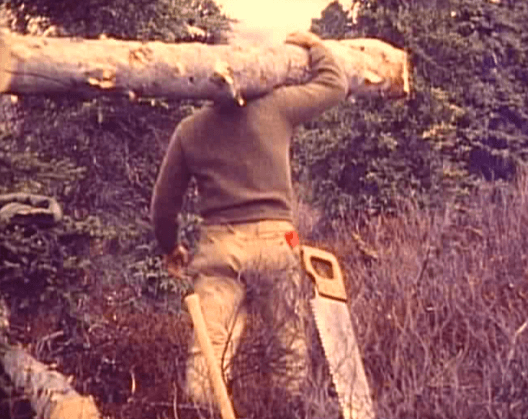
Because of Richards carpentry background, the cabin he built is noted for it’s remarkable craftsmanship. Most of which can be seen in the documentary Alone In The Wilderness.
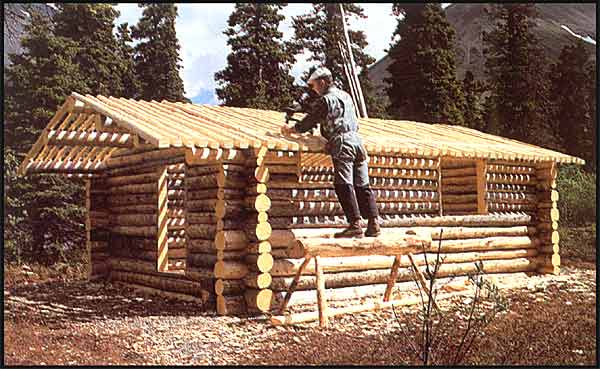
All the materials he used (rocks, trees, gravel) to build the cabin, the furnishings and the fireplace/flue were obtained there at his build site. Metal containers were used for food storage—one-gallon cans made into a basin and buried below the frost line to keep fruits and perishables cold for prolonged periods in the cool earth and still accessible during the winter months. Leon Reid “Babe” Alsworth, bush pilot, missionary and friend to Richard would return periodically to bring food and orders that Proenneke placed through him to Sears.
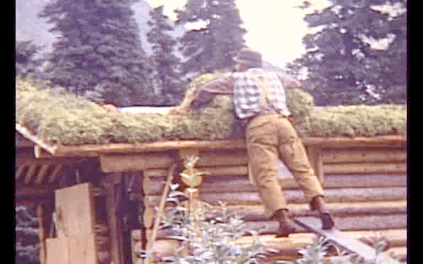
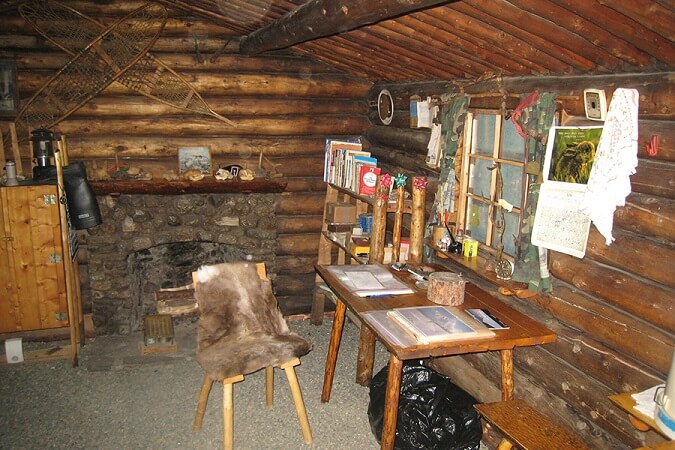
Alone In The Wilderness YouTube Documentary: Part I
Richard Proenneke spent sixteen months building his cabin before he returned south to visit family and secure more supplies. The following spring he returned to his cabin and remained there for the next thirty years. From time to time Richard would return to the lower 48 to visit friend and family. He created a film record of his solitary lifestyle and cabin which would later be re-cut and made into the documentary Alone in the Wilderness.
Alone In The Wilderness: Part I
It has aired on PBS numerous times and with a score of 9/10 from the aggregation of nearly 2000 votes at the Internet Movie Database, the documentary is one of the highest rated of all time.
In 2011 a sequel was produced after it was discovered that Proenneke had shot enough footage for at least two more documentaries.
Alone In The Wilderness Part II
In 2007 Proenneke’s cabin was included in the National Register of Historic Places.
Death and Legacy
In 1999, Proenneke returned to civilization at age 82 and lived the remainder of his life with his brother Raymond “Jake” Proenneke in Hemet, California. He passed away of a stroke on April 20, 2003, at the age of 86. He left his cabin to the National Park Service, and it remains a popular visitor attraction in the remote Twin Lakes region of Lake Clark National Park.
Richard’s Journals Become A Book
Sam Keith became a close friend of Richard’s over the course of many hunting and fishing trip. He suggested to Richard that the journals he kept might make for the basis for a good book. Proenneke agreed to let Sam make whatever changes he thought would help transition his journals into a book. In 1973, Keith published the book One Man’s Wilderness: An Alaskan Odyssey, based on Proenneke’s journals and photography.
After years in print it was re-issued in a new format in 1999, winning that year’s National Outdoor Book Award (NOBA).
A hardcover “commemorative edition”, celebrating the fortieth anniversary of the publication of One Man’s Wilderness, was published by Alaska Northwest Books in 2013.
One Man’s Wilderness: An Alaskan Odyssey
In 2003, some of the copyrighted text from the book and some of Proenneke’s film were used with permission in Alone in the Wilderness, which began appearing on U.S. Public Television. The documentary centers around Richard Proenneke building a cabin from the surrounding natural resources and includes film footage, narration of wildlife, weather, and the natural scenery that Richard recorded while he goes about his daily routine.
In 2005, the National Park Service and the Alaska Natural History Association published More Readings From One Man’s Wilderness, another volume of Proenneke’s journal entries. The book, edited by John Branson, a longtime Lake Clark National Park employee and friend of Proenneke, covers the years when the park was established. Dick had a very close relationship with the Park Service, assisting them in filming sensitive areas and notifying them if poachers were in the area.
As with More Readings From One Man’s Wilderness, the volume is edited by John Branson.
More Readings From One Man’s Wilderness
The Early Years: The Journals of Richard L. Proenneke
This collection of journals covers Proennekes’ first years at Twin Lakes, including the construction of his cabin and his food cache. The journal entries overlap those in Sam Keith’s edited collection of some of Proenneke’s journals One Man’s Wilderness: An Alaskan Odyssey. But unlike that book—in which Keith frequently modified Proenneke’s writing style—The Early Years presents Proenneke’s journals with minimal or no modification.
The Complete Alone In The Wilderness Package
This package from Amazon consists of…
- Alone In The Wilderness
- Alone In The Wilderness II
- The Frozen North
- Alaska Silence & Solitude
- One Man’s Wilderness
Alone In the Wilderness YouTube Documentary: Part II
What Did He Do in the Wilderness?
Richard Proenneke lived a simple and self-reliant life in the wilderness. He grew his own vegetables, such as potatoes, carrots, and cabbage, in a small garden. He hunted, fished, and trapped for meat, and gathered berries, nuts, and mushrooms for food. He made his own bread, cheese, and butter. He collected firewood, water, and ice. He maintained his cabin and tools, and repaired his clothes and shoes. He read books, listened to the radio, and played his flute.
He also enjoyed hiking, skiing, canoeing, and exploring the surrounding area. He admired the beauty and diversity of nature, and observed the behavior and habits of the wildlife. He saw bears, moose, caribou, wolves, foxes, eagles, and many other birds and animals. He respected and appreciated the natural balance and harmony of the ecosystem, and tried not to disturb or harm it.
What Can We Learn from His Experience?
Richard Proenneke’s experience of living alone in the wilderness for 30 years is a remarkable and inspiring story. It shows us the value of simplicity, self-reliance, and independence. It also shows us the importance of curiosity, creativity, and perseverance. It teaches us to respect and appreciate nature, and to live in harmony with it. It challenges us to question our assumptions and expectations, and to discover our true selves.
FAQs
-
How did Richard survive in the harsh Alaskan winters?
- Proenneke’s resourcefulness included meticulous preparation, insulation, and a deep understanding of the seasonal challenges.
-
What impact did his lifestyle have on the local wildlife?
- Proenneke’s minimal impact philosophy ensured a harmonious coexistence with wildlife, leaving a gentle footprint on the ecosystem.
-
Did he face any health challenges during his time in the wilderness?
- Proenneke’s dedication to a healthy lifestyle, including a balanced diet and regular exercise, contributed to his well-being in the wild.
-
How can one incorporate elements of Proenneke’s off-grid living into a modern lifestyle?
- Proenneke’s principles of self-sufficiency and environmental mindfulness can be applied through sustainable practices, conscious consumption, and embracing nature.
-
What is the significance of Richard’s story in today’s fast-paced world?
- In a world dominated by technology, Proenneke’s story serves as a reminder of the inherent human connection to nature and the profound benefits of embracing solitude.
Conclusion
In the tapestry of Richard Proenneke’s life, woven in the heart of the Alaskan wilderness, we find timeless lessons. His legacy beckons us to embrace solitude, tread lightly on the Earth, and cultivate a profound connection with the natural world. Proenneke’s journey transcends time, inviting us to explore the boundless beauty of a life well-lived in harmony with nature.
Reading through the pages of Richard Proenneke’s life, we discover more than a solitary existence; we find an enduring legacy. His off-grid odyssey invites us to reflect on simplicity, resilience, and the profound connection found in embracing solitude amidst the wild beauty of nature.
Richard Proenneke’s odyssey invites contemplation on the simplicity, resilience, and profound connection found in embracing solitude amidst the untamed beauty of the natural world. As we traverse the echoes of his timeless journey, we find not just a tale of survival but a testament to the enduring spirit that thrives when man and nature intertwine.
We also wrote another article a while back titled How Dick Proenneke Built a Log Cabin Alone in Alaska
P.S. If you enjoyed this post about our Richard Proenneke Article then why not share it and pin it.
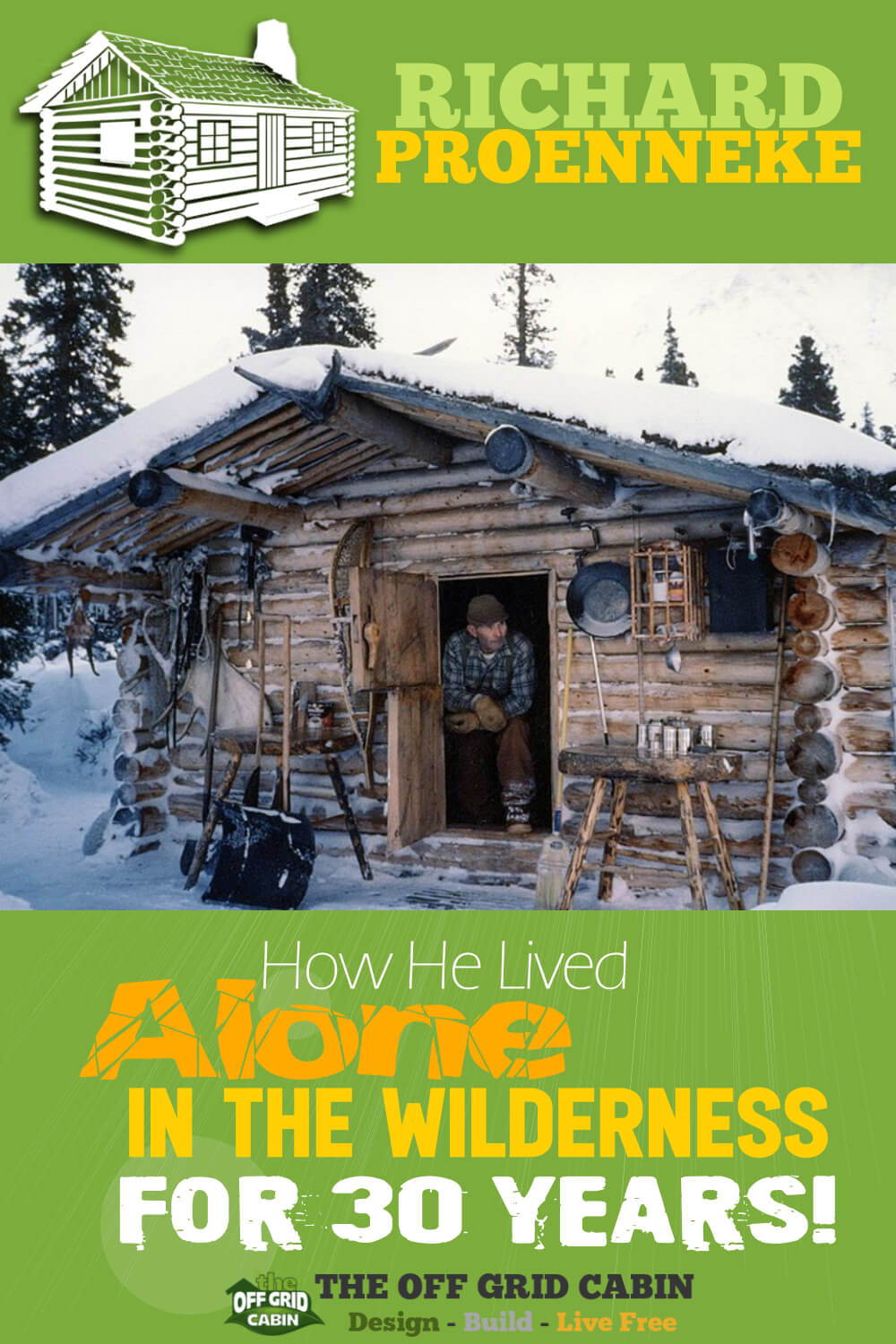
how to clean solar panels
How to Clean Solar Panels: A Step-by-Step DIY Guide As you already know, residential and off-grid solar systems are amazing sources of renewable energy that are quickly growing in popularity. The large flat [...]
earthship
What Is an Earthship and How It Can Help Save the Planet Imagine living in a home that is completely self-sufficient, eco-friendly, and comfortable. A home that grows its own food, collects its [...]
3-way-switch-wiring
3-Way Switch Wiring: A How to Comprehensive Guide Here at the off grid cabin we’ve done our fair share of electrical work including 3-way switch wiring. We’ve done all the internal and external [...]
solar generator
How To Find The Best Solar Generator Impact-Site-Verification: c336f89e-c692-4afd-99d9-0150f7329466 When we first cleared the land to build our off grid home back in 2016, we started with one of those small 700 watt [...]
Off Grid Heating
The Best Off Grid Heating Methods Introduction To Off Grid Heating If you're Living off the grid already or planning to in the future, you already know how important it is to have [...]
off grid appliances
The Best Off Grid Appliances for Off Grid Living Introduction To Off Grid Appliances Living off the grid can be a rewarding and fulfilling experience, but it also comes with some challenges. One [...]


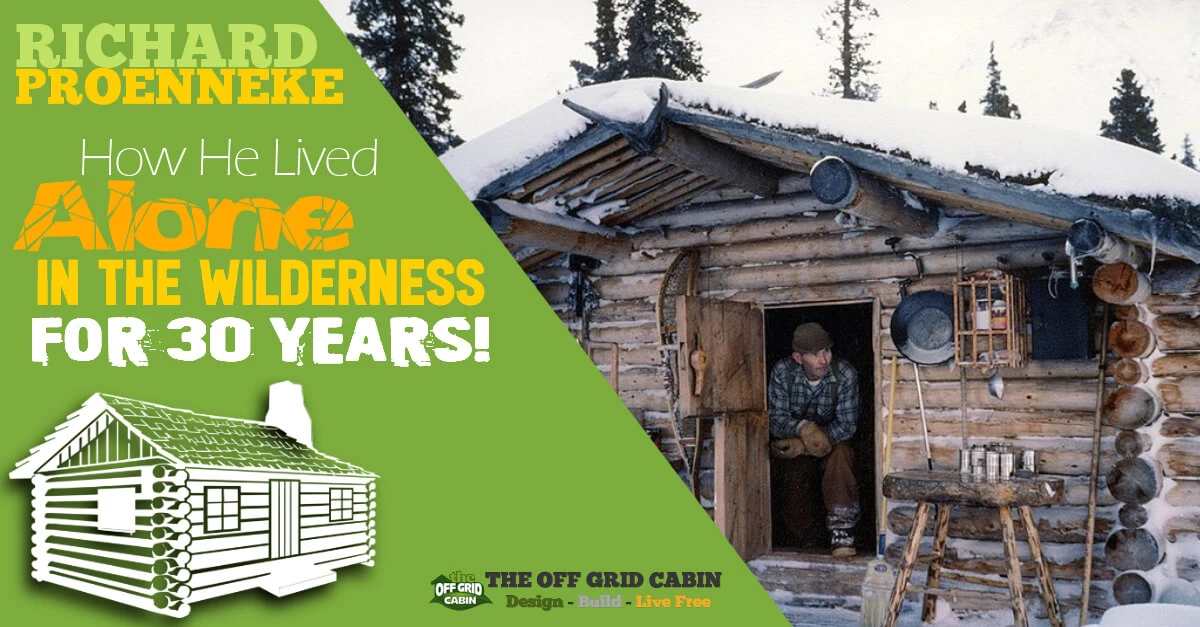
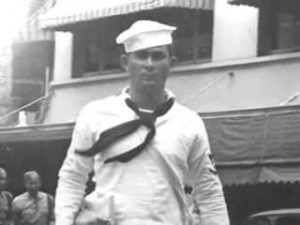
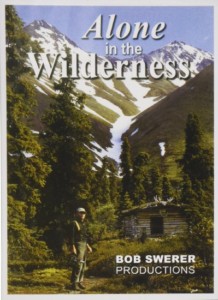
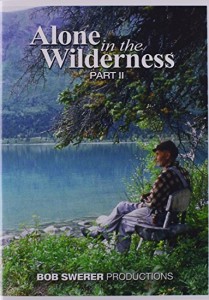
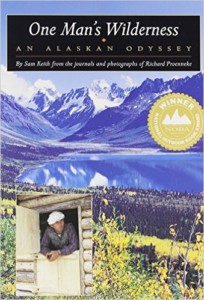
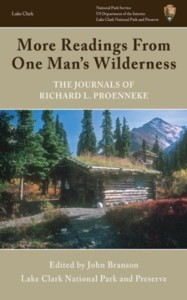
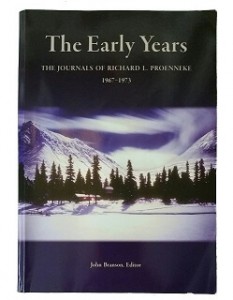
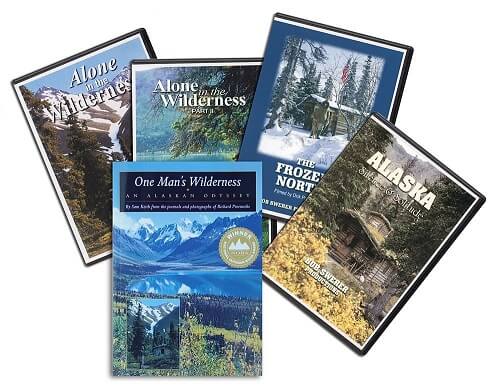


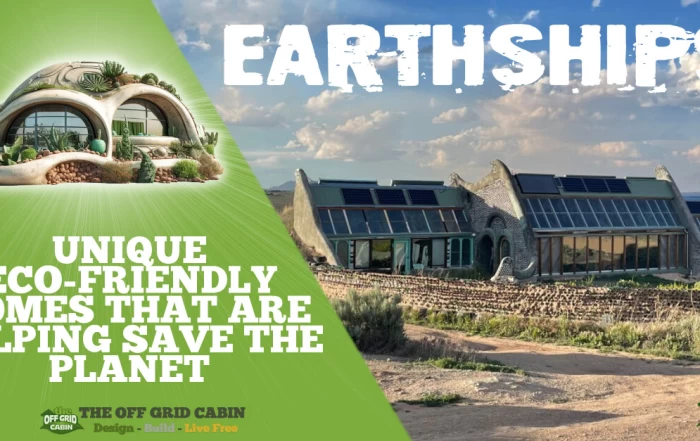

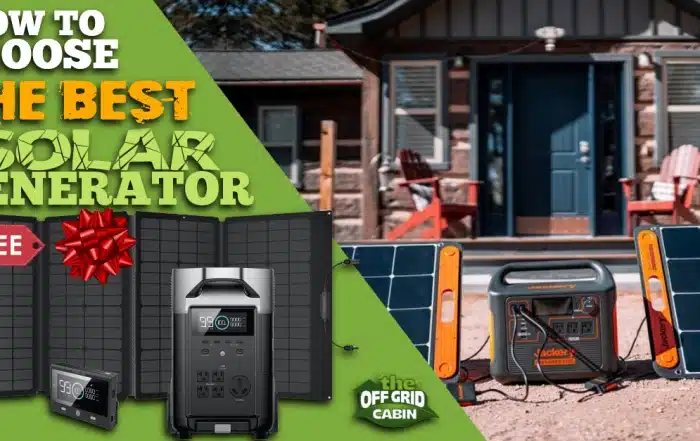
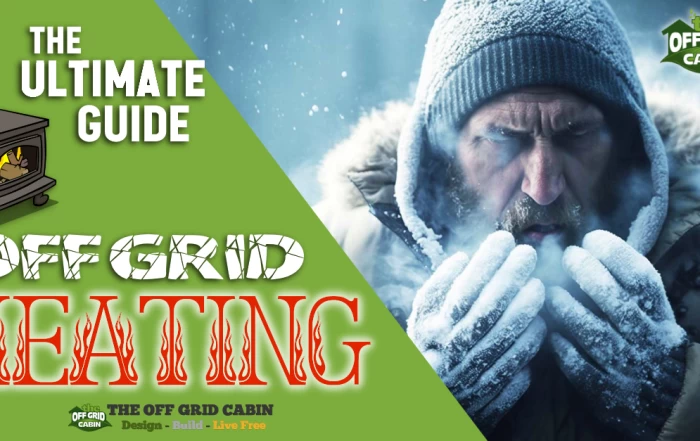

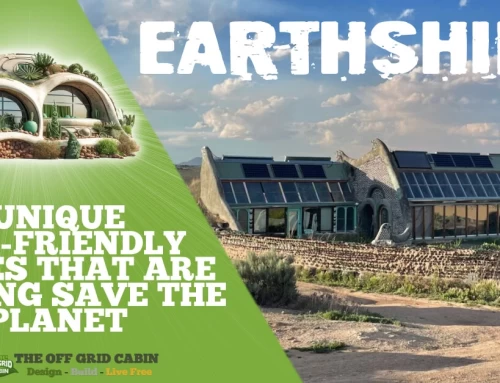

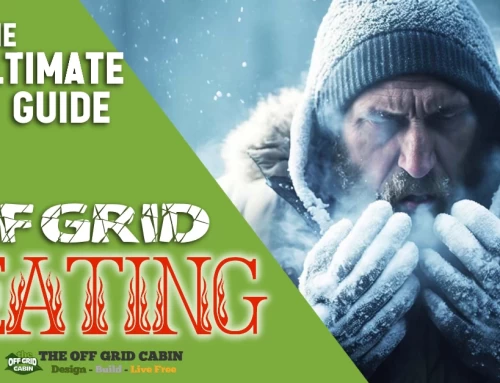
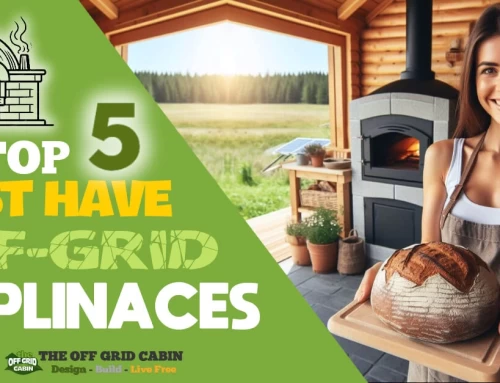

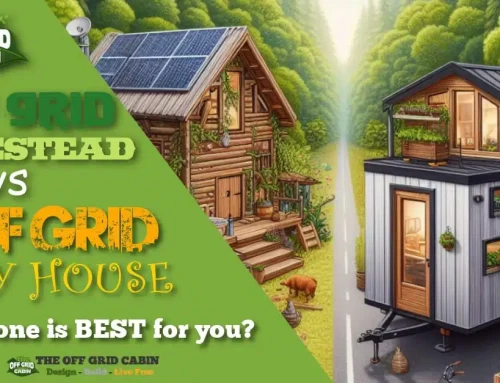



This reminded me of the old Daniel Boone tv series for some reason.
What a remarkable man! I would loved to have sat and talked with him.
I’ve watched “Alone in the Wilderness” on PBS time and time again. I never tire of it because I learn something new every time I watch it! What a remarkable man and fascinating story.
Have several personal letters from mister Proenneke after reading his first book, Back in 1970’s or 60’s